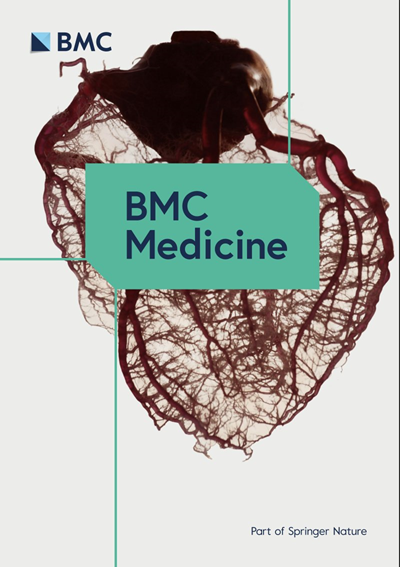摘要
背景:通过随机临床试验(RCT)证明新的结直肠癌(CRC)筛查项目能降低死亡率是一项挑战。我们采用世界内镜组织 CRC 筛查委员会框架提出的循序渐进的方法,系统地回顾了单轮项目的绩效结果:方法:我们检索了 MEDLINE、EMBASE、Central 和 Ichushi Web 数据库,直至 2024 年 10 月 28 日,以找到比较愈创木酚粪便隐血试验(gFOBT 和 FIT)、柔性乙状结肠镜检查(FS)、计算机断层扫描结肠成像(CTC)和全结肠镜检查(TCS)的 RCT。配对审稿人筛选研究、提取数据并评估偏倚风险。进行了贝叶斯随机效应网络荟萃分析,并采用建议分级评估、发展和评价方法对证据的确定性进行了评估。主要结果为晚期肿瘤(AN)检出率,次要结果为参与率和结直肠癌(CRC)检出率,所有结果均在第一轮筛查期间得出:结果:共纳入 18 项 RCT(437,072 名受邀者)。筛查参与度的偏倚风险较低或引起了一些担忧,但检测结果的偏倚风险较高。在对 15 项不允许交叉的 RCT 进行的网络荟萃分析中,基于 FIT 的项目的 AN 检出率高于基于 gFOBT 的项目(相对风险 [RR] 2.48;95% 可信区间 [CrI] 1.52-4.21;中等确定性)。与基于 FS 的方案相比,基于 CTC 的方案(RR 1.01;CrI 0.43-2.23;极低确定性)和基于 TCS 的方案(RR 1.03;CrI 0.54-1.78;低确定性)的 AN 检出率没有差异。所有可视化模式项目的 AN 检出率均高于基于 FIT 的项目(FS:RR 2.13 [CrI 1.38-3.77];CTC 2.16 [1.11-4.51];TCS 2.19 [1.43-3.48];确定性均较低)。较低的事件发生率排除了有关 CRC 检测的明确结论(确定性很低到很低)。TCS项目的参与率最差(确定性很低到很低)。允许交叉的比较数据有限:这是第一项评估项目初始绩效指标的网络荟萃分析。基于 FIT 的项目可能比基于 gFOBT 的项目发现更多 AN 病例,而基于 FS、CTC 和 TCS 的项目可能优于 FIT。由于第一轮结果的局限性,长期结果应在 10-15 年后进行评估。Background: Demonstrating mortality reduction in new colorectal cancer (CRC) screening programs through randomized clinical trials (RCTs) is challenging. We systematically reviewed single-round program performance outcomes using a stepwise approach proposed by the World Endoscopy Organization CRC Screening Committee framework.
Methods: The MEDLINE, EMBASE, Central, and Ichushi Web databases were searched until October 28, 2024, to find RCTs comparing guaiac-based and immunochemical fecal occult blood testing (gFOBT and FIT), flexible sigmoidoscopy (FS), computed tomographic colonography (CTC), and total colonoscopy (TCS). Paired reviewers screened studies, extracted data, and assessed bias risk. A Bayesian random-effects network meta-analysis was conducted, and the certainty of evidence was evaluated using the Grading of Recommendations Assessment, Development and Evaluation approach. The primary outcome was advanced neoplasia (AN) detection, and the secondary outcomes were participation and colorectal cancer (CRC) detection, all during the first screening round.
Results: Eighteen RCTs (437,072 invitees) were included. The risk of bias was low or raised some concerns for screening participation, but it was high for detection outcomes. In the network meta-analysis of 15 RCTs not allowing crossover, the FIT-based program had a higher AN detection rate than the gFOBT-based program (relative risk [RR] 2.48; 95% credible interval [CrI] 1.52-4.21; moderate certainty). AN detection rates were not different in the CTC- (RR 1.01; CrI 0.43-2.23; very low certainty) and TCS-based (RR 1.03; CrI 0.54-1.78; low certainty) programs compared with the FS-based program. All the visualization modality programs had higher AN detection rates than the FIT-based program (FS: RR 2.13 [CrI 1.38-3.77]; CTC 2.16 [1.11-4.51]; and TCS 2.19 [1.43-3.48]; all with low certainty). Low event rates precluded definitive conclusions regarding CRC detection (very low to low certainty). The TCS-based program had the worst participation rate (very low to low certainty). Comparative data allowing crossover were limited.
Conclusions: This is the first network meta-analysis that evaluates program-level initial performance indicators. FIT-based programs likely detect more AN cases than gFOBT-based programs, while FS-, CTC-, and TCS-based programs may outperform FIT. Due to limitations in first-round results, long-term outcomes should be assessed after 10-15 years.

 求助内容:
求助内容: 应助结果提醒方式:
应助结果提醒方式:


